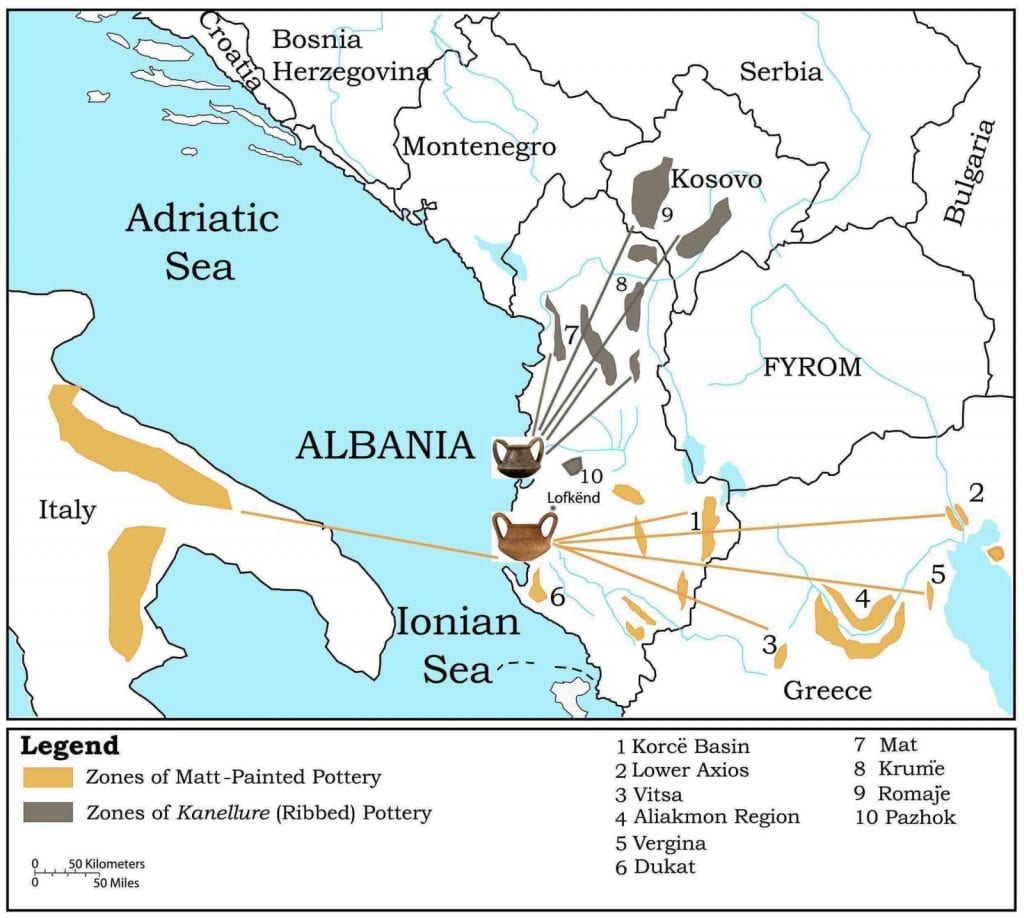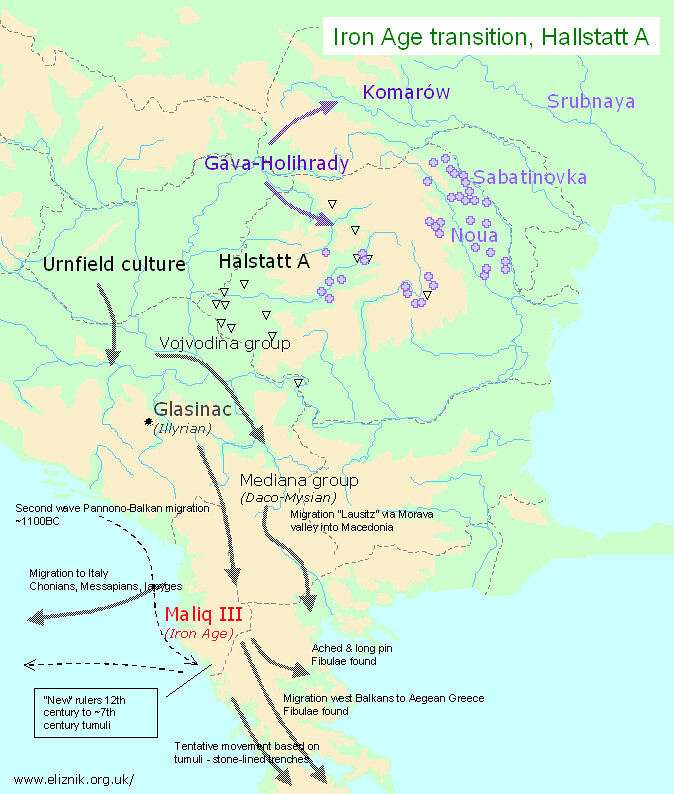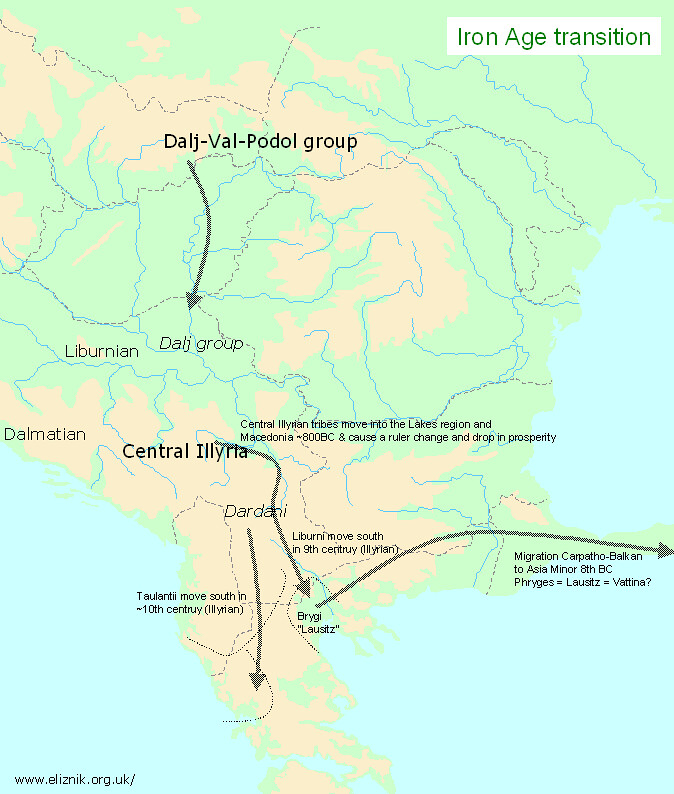PaleoRevenge
Regular Member
- Messages
- 962
- Reaction score
- 681
- Points
- 93
R1b-Z2103 was all over Balkans in Early Bronze Age, the point being we don't know where the specific Albanian subclade was.
Hell, i am sure Early Cardials from Northern Epirus and Southern Albania must include E-L618, but the E-V13 story so far looks far away from Albania.
In conclusion, i see no issue in that a more R1b-Z2103/R1b-PF(cannot remember exact mutation) culture mingled with a more J2b2-L283 Glasinac-Mati to form Southern Illyrians by classical antquity.
J2b-L283 should be found in Mallakaster where Glasinac pottery shows up together with matt-painted. However, even here R-PF7563 maintained a strong presence, because in late antiquity they(Byllones) willingly Hellenized, which points to them feeling a connection to the people south of them, a purely Glasinac zone would not do that on their own will.
Now here is the kicker with the so called Cinamak style burials in Korca basin. They appear after 750 BCE, and the new people per abstract from the paper are R-Z2103. Here is the missing puzzle. I remember reading on ratsko through google translate Garasin's Iron Age description of Serbia. I vividly recall that in the 700s Glasinac push into the Kukes corridor and the Brnjica people give it up without a fight, in the plains of Metohija they bitterly resists but Glasinac manages to carve out their the area west of Drin. Unless google translate the dates wrong, this matches quite perfectly with the events described south.
So what are the odds, that when Glasinac makes a push on western Brnjica, a R-Z2103 people show up in Korca with Cinamak style burials. To pile on further, certain "Dardanians" are recorded as having invaded the area, Alexander's Philip father even fights a Dardanian king in this area. It was even posted somewhere in this forum that the Dardani might have been settled(locals) in this part of Albania in the period in question and not based/operating out of Kosovo.













